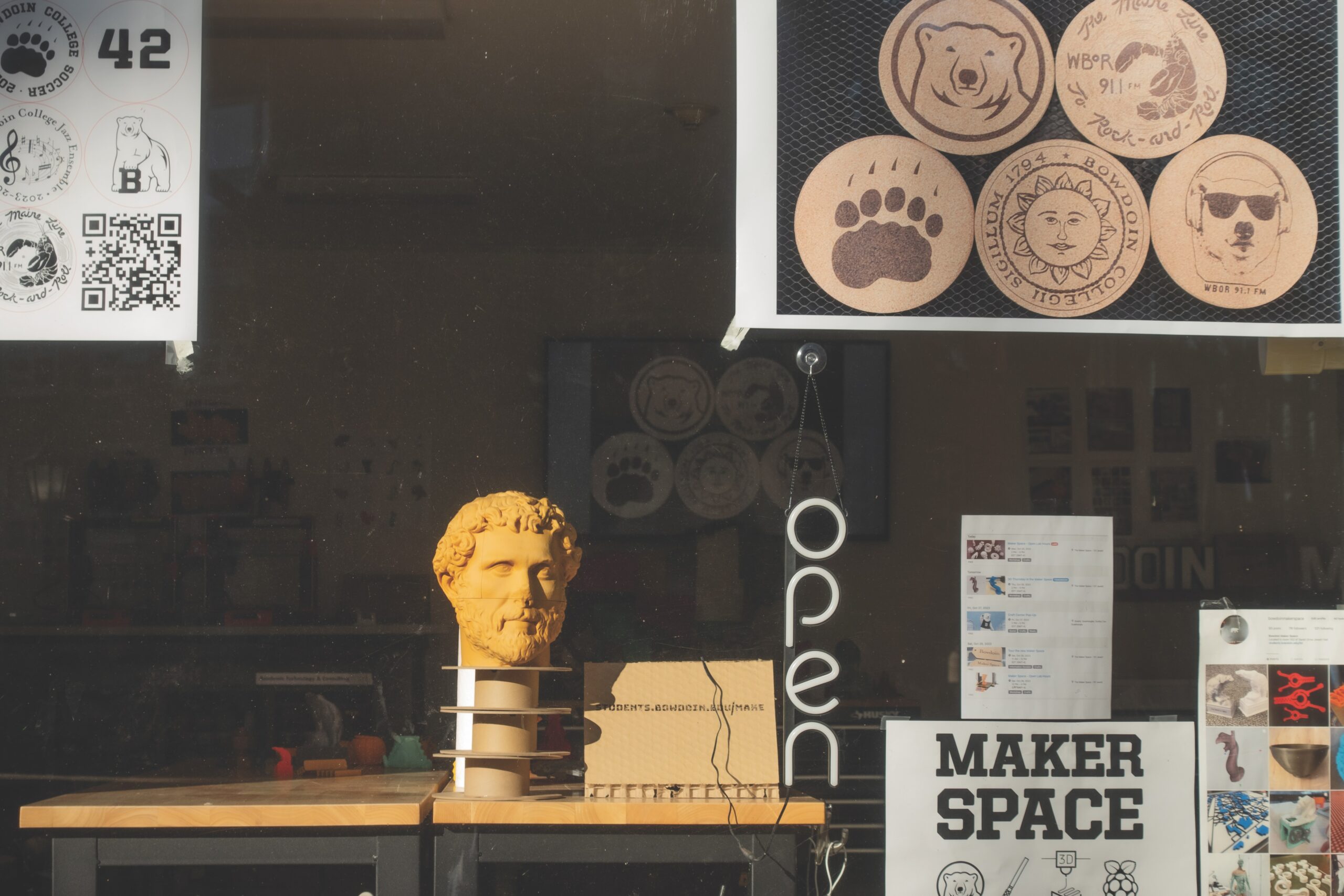The Gems of Jewett Hall’s Maker Space
December 1, 2023
 Alex Spear
Alex SpearFor many students, Jewett Hall is best described as the shorter, unassuming cousin to Coles Tower, but what lies inside is a treasure trove of student innovation and creativity: the Bowdoin Maker Space.
Originally located in the Hawthorne-Longfellow Library and now settled in its new home in Jewett Hall, the Maker Space has evolved significantly since its inception. Senior Producer for Academic Media David Israel was inspired to create the Maker Space by the collaborative, open-source environments he observed at other colleges.
“I really wanted to do something here at Bowdoin, to bring the Maker Space concept to our campus,” Israel said. “At the time, we [were] seeing other Maker Spaces anywhere we went. We were the last school in the NESCAC to get a Maker Space, so it really needed to happen here. Since then, it’s grown organically for a number of years.”
What started as a modest room dedicated to 3D printing projects has blossomed into an entire tinkering workshop with an array of equipment. Shea Tyrrell ’25, a student worker at the Maker Space, explained how the move from H-L to Jewett Hall, and a subsequent move to a different room within Jewett, has allowed the Maker Space to expand their offerings. Today, the Maker Space boasts a variety of crafty curiosities, including a number of 3D printers, a vinyl cutter, a laser cutter and a VR headset center.
Israel explained that the Maker Space is set apart by its inclusivity and accessibility.
“Anyone who comes in can get trained on how to use any machine and is allowed to use it,” he said.
Unlike other Maker Spaces across college campuses, students are not charged to design small scale projects.
Tyrrell noted that while the equipment in the Maker Space, such as 3D printers and laser cutters, requires significant initial investment, the ongoing costs for materials like filament and wood are surprisingly low.
“It’s about $15 to $20 for a kilogram roll of filament, and that lasts quite a while,” Tyrrell noted. “Many prints come out to a few cents.”
The Maker Space’s impact extends beyond personal projects.
“We’ve partnered with classes in the past. I think we’re trying to do that more,” Tyrrell said.
A neuroscience course taught by Professor Michael Fine, for example, offered extra credit for students who created projects related to the nervous system in the Maker Space, leading to an influx of 3D printed brain models and even cochlear ear canal prints.
Despite these successes, the Maker Space faces challenges advertising its resources and opportunities to students. Both Israel and Tyrrell hope to see more students utilizing the space but have encountered scheduling barriers to increasing student access.
“One of the things that we have not successfully cracked here is the issue of open hours. We’ve been grappling with finding the perfect balance for our open hours that align with students’ varied schedules,” Israel said. “Ideally, I envision a model where we have swipe card access, much like they do at the Craft Center, to provide more flexibility. But we’re still waiting on the funding and approval for that kind of access, which would significantly enhance the convenience and usability of our space for students.”
Despite scheduling difficulties, Israel is optimistic about the future of the Maker Space and its capacity to attract more students while expanding its equipment offerings. This year, the Maker Space launched customizable cork coasters to introduce more students to the space.
“We’re exploring the expansion of Maker Space, incorporating VR, podcasting and potentially filmmaking. This is part of our broader vision of creating a versatile and dynamic Maker Space plus,” Israel said.
The Maker Space serves as a unique resource for practical, skill-based learning while also exemplifying liberal arts values.
The Maker Space’s goal is to be a place where students can learn about technology, but also where they can learn about themselves and their creative capacity.
“This isn’t just a space for class projects; it’s a space for hobbyists, for anyone who wants to learn about these technologies,” Tyrrell said.

Comments
Before submitting a comment, please review our comment policy. Some key points from the policy: